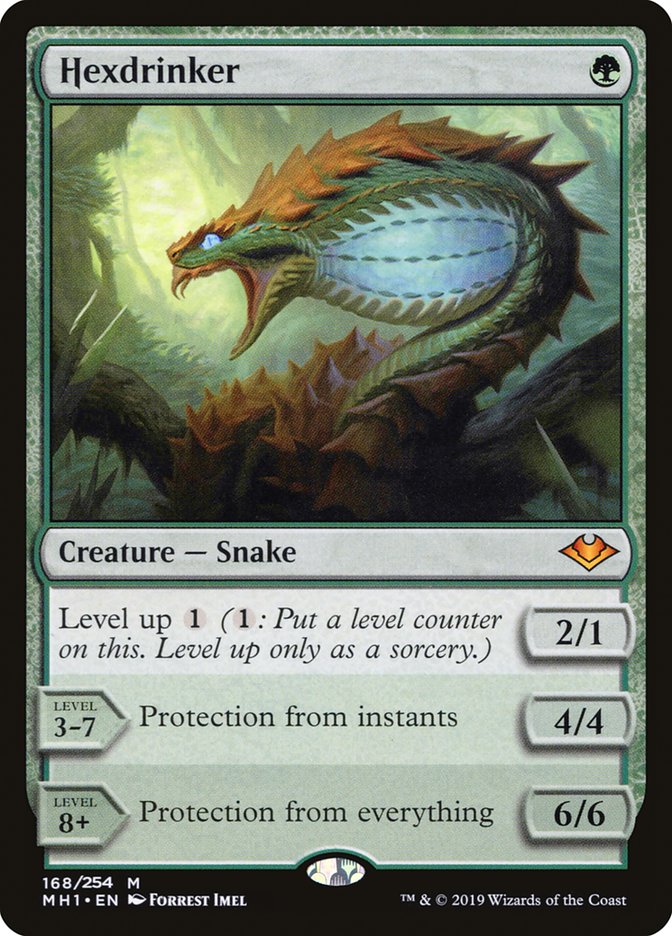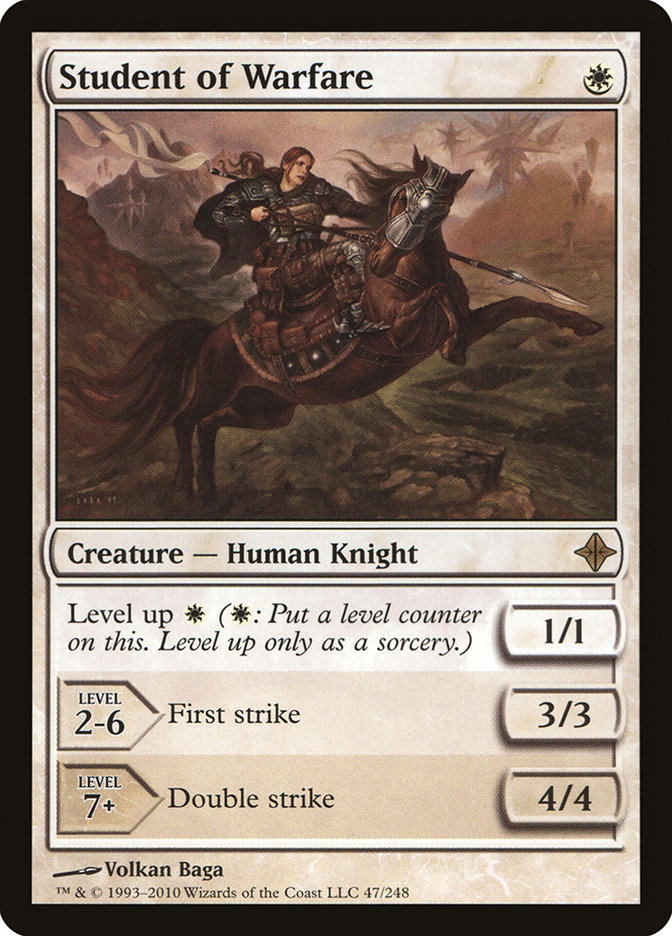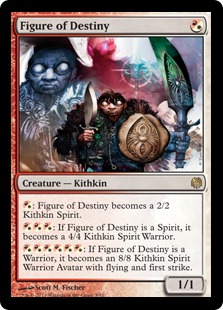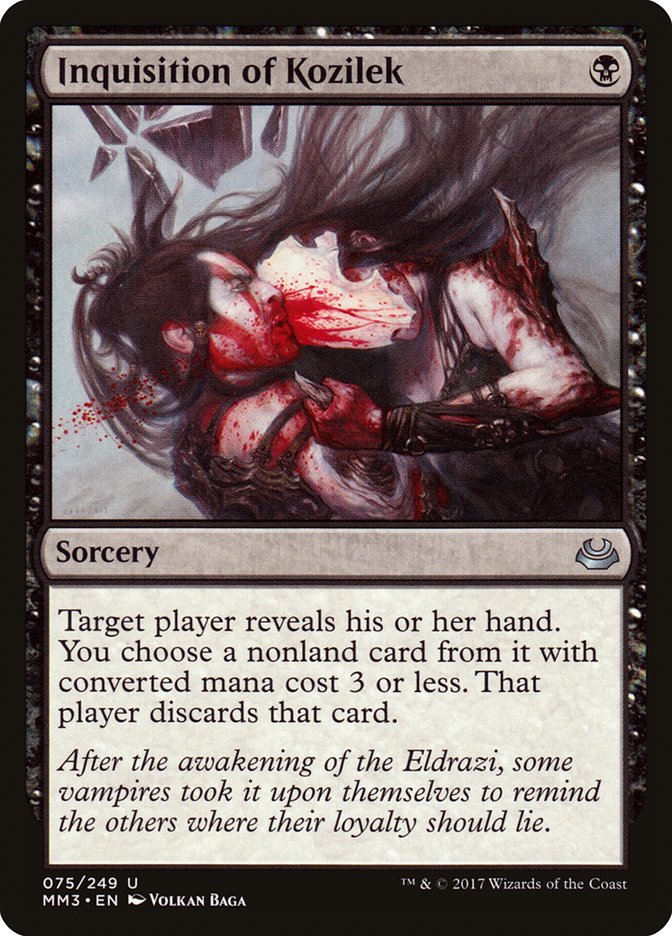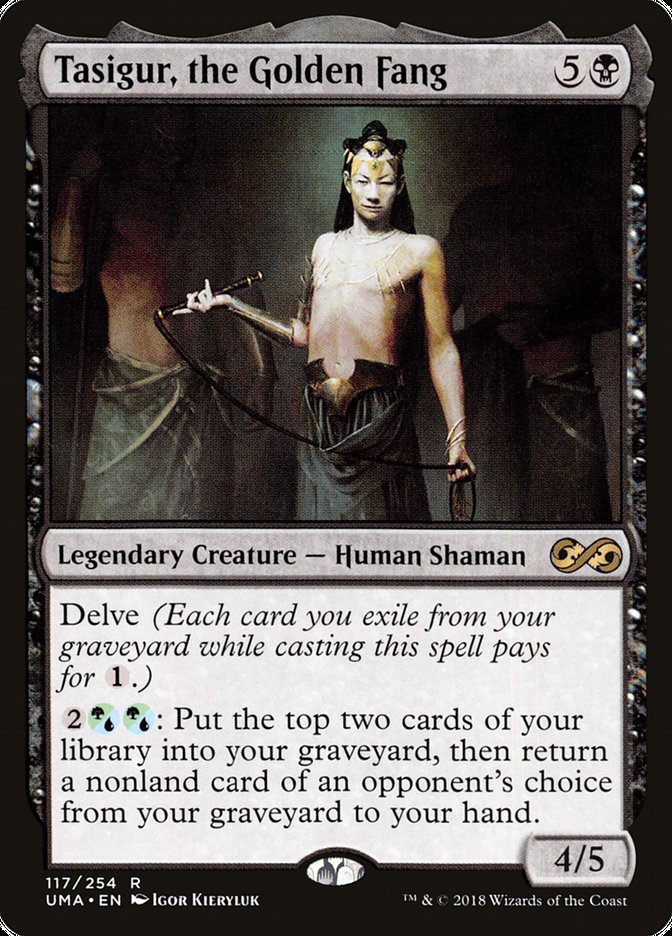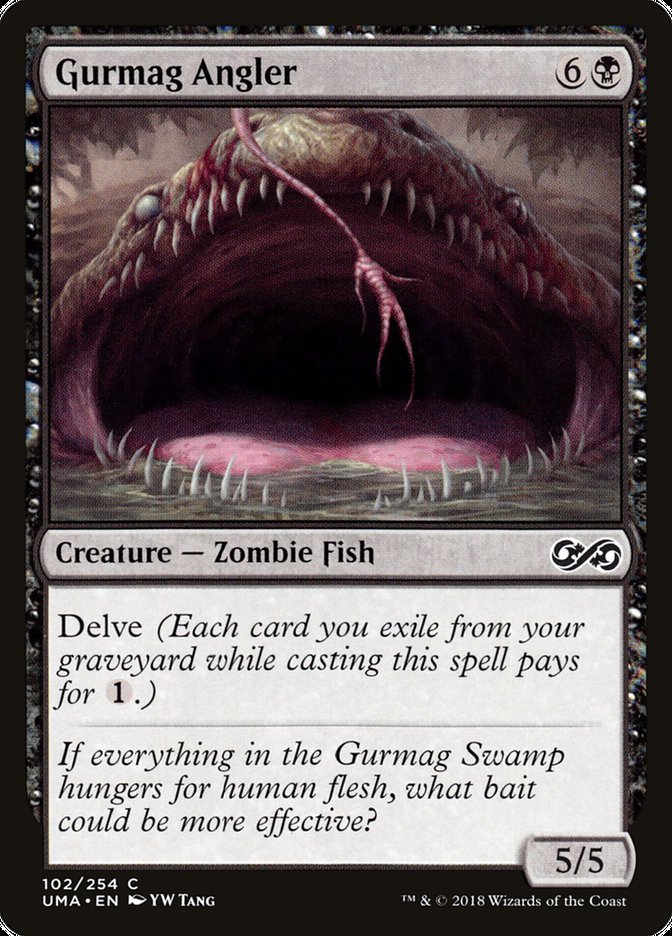The one-mana tempo threat has been a staple of non-rotating formats for the majority of tournament Magic’s lifespan. Occasionally, the circumstances are conducive to a Standard deck playing cheap, tempo-oriented threats as well.
As a younger format, Modern has seen fewer true tempo decks than Legacy, Vintage, or even Standard and the reasons why successful tempo decks in Modern are few and far between is complicated enough that it could probably be its own article. However, the long and short of it is basically that Modern is very diverse and usually has several Tier 1 decks which attack from different angles. The best decks are usually very linear and can be linear in completely different ways.
For example, Infect was a top-tier Modern deck for years. At the peak of Infect’s power, Dredge, Mono-Green Tron, and Lantern Control were all popular, well-positioned decks. It’s tough to build a tempo deck that can be proactive enough to beat the noninteractive decks while also having enough interaction for Infect, Burn, and Affinity. Grixis Delver tried to do this but was very weak to Tron and Dredge. Therefore, it’s usually safer to just play a linear deck that has its own nut draws and can goldfish opponents like the other decks do so well.
Despite the fact that such a thing might be both well-received and interesting, this is not a broad-strokes Modern theory article. This is an article about a tiny Snake with grand aspirations.
Hexdrinker is a very interesting Magic card. It provides a mana sink while also representing a game-ending threat. It’s very mana intensive but provides a seriously attractive payoff. We’ve seen one-drops with level up as well as cards with functionally similar abilities in the past.
Student of Warfare and Figure of Destiny both saw their fair share of play in Standard during their respective eras. Their design was strikingly similar to that of Hexdrinker, with one glaring difference: the final level was still very susceptible to removal, albeit a narrower range of it. The middle level of Hexdrinker is annoying and tough to deal with and the final form requires a specific set of answers, ending the game in short order unless the opponent finds a sweeper or Edict effect, or else kills you before it kills them.
The final level represents a tough-to-handle threat, even in a format as powerful and diverse as Modern, and it’s really important in the context of Modern that your threat is reliable. If you’ve invested eight mana into a creature, it can’t simply die and it’s similarly important to build your deck in a way that facilitates keeping Hexdrinker alive until it’s at least at the 4/4 status. Once you’ve invested four total mana, Hexdrinker is almost certainly “worth it.” The commonly played removal spells that aren’t instants are mostly limited to planeswalkers and Supreme Verdict / Wrath of God / Damnation.
So, how do we build our deck to maximize this card?
Delver of Secrets and Hexdrinker exist in a similar space in Modern in my mind. Obviously, Delver is a multi-format staple and one of the best creatures ever printed, but Modern is the one format where Delver has been mostly unsuccessful. I think there are a few obvious similarities between these two cards as well as a couple of glaring differences.
Similarities:
- Both cards come down early and provide a clock.
- Both cards are almost exclusively for fair, interactive decks.
- Both cards facilitate strategies where they’re the only creature you have on the battlefield.
- Both cards encourage you to play a lot of cheap spells in your deck.
The first two points are pretty obvious, but to expand on the third and fourth points a bit:
Delver obviously sees play in decks with a high spell count. These decks must have a relatively low creature count to make room for all the spells and there are plenty of games where Delver is your only threat. Hexdrinker exists in a similar space because spending mana to level it shouldn’t come at the cost of casting more creatures. That’s not to say Hexdrinker will be the only creature in your deck; I’m mostly stressing that you don’t want to be playing Hexdrinker in a deck with Knight of the Reliquary, Devoted Druid, Kitchen Finks, etc.
The Collected Company decks have too many three- and four-mana threats. Leveling Hexdrinker will come at a huge cost and be tough to justify, and these type of decks have a better mana sink in Gavony Township anyway. You really want a lot of things that cost one and two so you can use the level as a mana sink without getting cards stuck in your hand.
Because a ton of creatures are bad with Hexdrinker and because we want some agency over being able to keep our Snake alive, we end up with a bunch of interactive spells in our deck. Therefore, both Delver decks and Hexdrinker decks want a few good creatures and a bunch of cheap, efficient spells. The nature of said spells is where I see the first and most important difference between these cards.
Differences:
- Delver employs reactive spells, while Hexdrinker wants proactive spells.
- Delver is a game-winning threat without any additional mana investment.
- Hexdrinker’s 2/1 base power and toughness provide a higher floor than Delver’s 1/1 base power and toughness.
One implication of the third difference is that you’ll never play Delvers in a deck where they won’t transform, whereas you might occasionally be able to leverage Hexdrinker as a one-mana 2/1 when your mana is otherwise tied up. Delver decks have to sideboard in such a way that they can’t alter their spell count too drastically. Hexdrinker doesn’t have deckbuilding requirements quite as stringent. The card is still optimized in decks that can get it to Level 8, but it has a higher floor than Delver if things go wrong. Aside from this, there’s much less nuance regarding the third difference than there is with the first two.
The first two points reference the most important distinction and I want to elaborate on it so as to provide everyone with an accurate blueprint for building a Hexdrinker deck in Modern. Hexdrinker’s level up ability is activated as a sorcery. This means you’ll be tapping out almost every turn, and so your deck can’t be built the way a traditional Delver deck is built because you don’t want a ton of cheap counterspells. It’s even debatable whether you want cheap cantrips, but I suspect you want a few to ensure you’re hitting land drops, though you’re not going to need a high spell count like you would for a Delver deck.
So what kind of spells work well for a deck that’s tapping out at sorcery speed but still cares about being cheap and efficient? What’s a proactive way to counter something and also provide information as to how to plan future turns?
Discard spells are a proactive and cheap way to ensure that your opponent’s development is stunted while you’re leveling up your super Snake, as they can also snag whatever answers your opponent has in hand. One-mana discard is cheap enough that you’ll have leftover mana for another threat or some leveling.
These spells also work well with Hexdrinker because they’re essentially proactive counterspells. You’ll usually have to invest additional mana to win the game with Hexdrinker and discard lets you know the path is clear. One really sweet benefit of discard is that you can take their removal spell that isn’t an instant and then move up to Level 3 while the opponent is tapped out. Now their instant is dead and so is any one they draw off the top in the future. Hexdrinker decks want discard spells and the occasional cheap counterspell (Spell Pierce or Dispel), while Delver decks want to keep most or all their mana up each turn, leveraging cards like Remand and Mana Leak.
We’ve taken a look at some spells that would work well with Hexdrinker, but I mentioned earlier that the card works best with other cheap creatures. Let’s see which ones would provide the best supporting cast for the Snake.
Tarmogoyf is a great inclusion in a deck with cheap discard and removal. Turn 1 Hexdrinker into a Turn 2 Tarmogoyf puts opponents in a tough spot. If they kill the Tarmogoyf, you’ll be able to make your third land drop and send Hexdrinker right up to Level 3. If they kill the Hexdrinker, your Tarmogoyf will grow and you’ll have Turn 3 to spend your mana as you please. Tarmogoyf has been in a rough spot in Modern for a while, but Modern Horizons could change that and I like how these cards line up.
A natural fit considering we already want to be aggressively casting Thoughtseize, having two one-mana threats that scale well is a great place to start. This threat base lets you cast multiple spells per turn while also filling the gaps by adding level counters to Hexdrinker. Death’s Shadow and the next creatures we discuss could make Stubborn Denial a viable way to protect our creatures.
The delve threats are usually one or two mana and work well with our cheap discard spells and other one-mana threats. I think delve creatures and Death’s Shadow make for a better complementary threat base than Tarmogoyf does. This deck could play Stubborn Denial too which is one of the counterspells that’s cheap enough and powerful enough that it warrants inclusion in a Hexdrinker deck.
I do think there’s some more interesting things to discuss regarding Hexdrinker but a lot of them are dependent on how the format shakes out with the inclusion of Modern Horizons. One such thing is using the card as a sideboard option for decks that play very few creatures. TitanShift is a great example of a deck that could do this because it makes a lot of mana and Hexdrinker can get to Level 8 very quickly. It’s a decent sideboard option for a deck like Infect if they’re looking to have a grindy plan after sideboard and Infect plays plenty of cards that protect Hexdrinker very well.
Before I go, I’ll leave everyone with a decklist this week. Keep in mind that this is a rough list, but it showcases Hexdrinker and its potential in Modern with Modern Horizons.
Creatures (16)
Planeswalkers (2)
Lands (18)
Spells (24)



